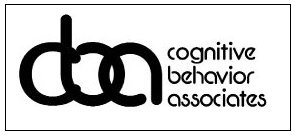What is Panic Attack?
A panic attack is a sudden feeling of intense fear paired with any of the following:
- Feelings of unreality
- Being detached from oneself
- Fear of dying
- Fear of going crazy
- Chills
- Hot flushes
- Numbness
- Tingling
- Pounding heart
- Shaking
- Sweating
- Shortness of breath
- Chest pain
- Nausea
- Feeling of choking
- Tummy distress
- Feeling faint
Panic attacks usually last from five to 10 minutes. During an attack, anxiety becomes so high that reason and logic are likely left by the wayside. A person is gripped in fear of something, someplace, or the unknown.
Panic disorder is marked by having repeated, unexpected panic attacks and fearing having another attack. Panic disorder is often called “Fearing fear” for this reason. Panic disorder may also include agoraphobia. Agoraphobia is the intense fear of situations where escape would be difficult in the case of a panic attack.
How Many People Have Panic Attacks?
- An estimated 2.7% of U.S. adults had panic disorder in the past year.
- Panic disorder was higher for females (3.8%) than for males (1.6%).
- An estimated 4.7% of U.S. adults have panic disorder at some time in their lives.
- Of people with panic disorder in the past year, severity ranged from mild to serious.
- An estimated 44.8% had serious impairment, 29.5% had moderate impairment, and 25.7% had mild impairment.
Medication to Treat Panic
Sometimes people with panic are helped with medications. If we find that medication can assist in treatment, we often refer clients to a psychiatrist colleague. There are maintenance medications that reduce panic symptoms and attacks. There are also short-term medications, which may be temporarily effective in treating panic. These are not advised as they are substance use disorders and are less effective than maintenance medications and cognitive behavior therapy.
Cognitive behavior therapy can be used alone or in combination with maintenance medications to treat people with panic disorder.
Treatment for Panic
CBT “Panic No More”
“Panic No More” is a CBT program designed for patients with panic disorder. In 10 weekly sessions, clients will learn about their disorder, how to see signs of an attack, and learn how to control themselves in a panic attack. Repeated exposure to the client’s feared activities works to reduce the client’s fear of these activities. It also works to reduce or eliminate attacks all together.
Our “Panic No More” treatment program is helpful for those who wish to rid themselves of panic disorder once and for all. CBT has shown to be the best type of therapy for panic, worry and phobic fear. Recent studies have shown that about 80-100% of patients report being panic free at the end of CBT treatment.Over 80% of patients remained panic-free after 2 years of having completed a CBT program for anxiety.
Our “Panic No More” program has four components:
Psychoeducation:
This part of our program teaches clients about their disorder. It is helpful to know the physiology of anxiety (“fight or flight” response). This helps the client better understand what happens during a panic attack. Clients learn common anxiety thoughts and behaviors that become a focus of treatment.
Interoceptive Exposure and Breathing Retraining:
This part of our program teaches clients how to better recognize and manage physical symptoms of panic attacks. This involves breathing retraining to help clients calm down. The focus here is the pairing of exposure to feared bodily sensations with calming responses.
Cognitive Restructuring:
This part of our program works by showing clients how to challenge unhelpful thoughts. We then aim to replace unhelpful thoughts that can lead to panic attacks with more helpful, positive thoughts. By doing this, clients learn how their thought process is related to their panic.
In-vivo Exposure:
This part of our program teaches clients to address avoidance behaviors. Avoidance may have started as a function of panic. Exposure to feared real-world problems helps clients by showing them their fears don’t come true.
Contact Cognitive Behavior Therapy in Beverly Hills today!
Click here for more info on the National Institute of Mental Health's website.


